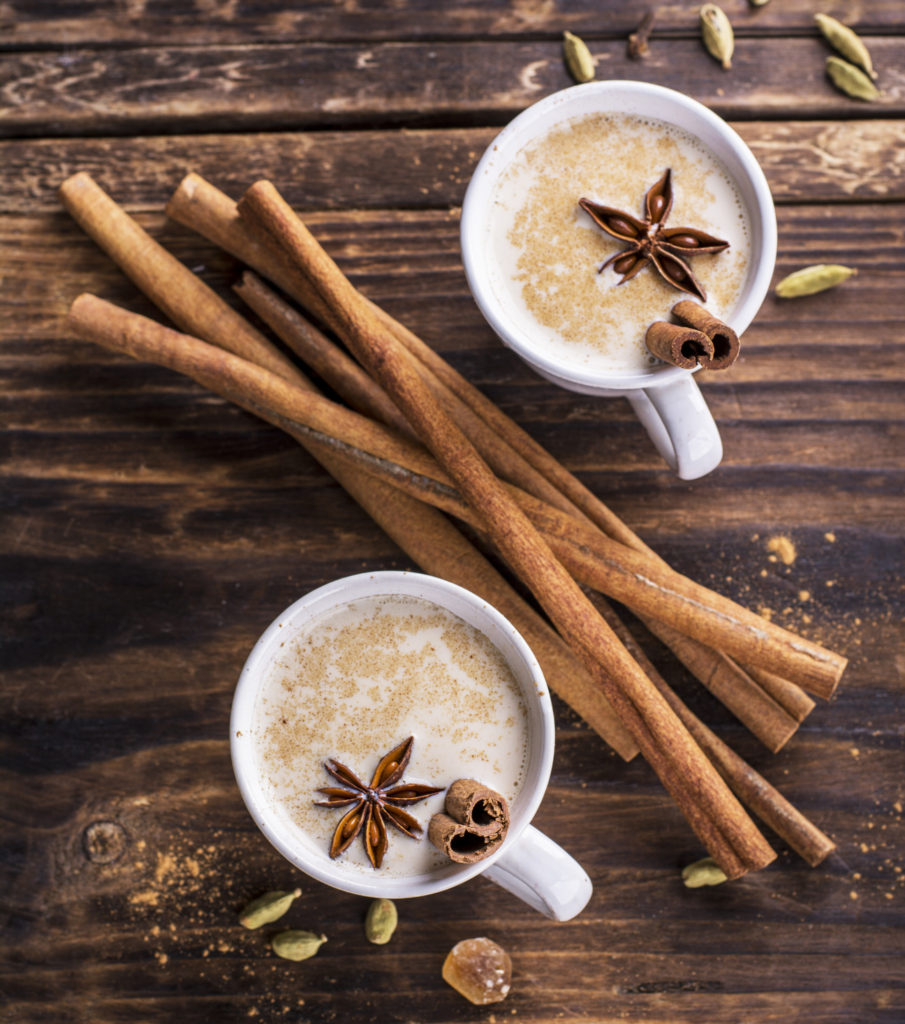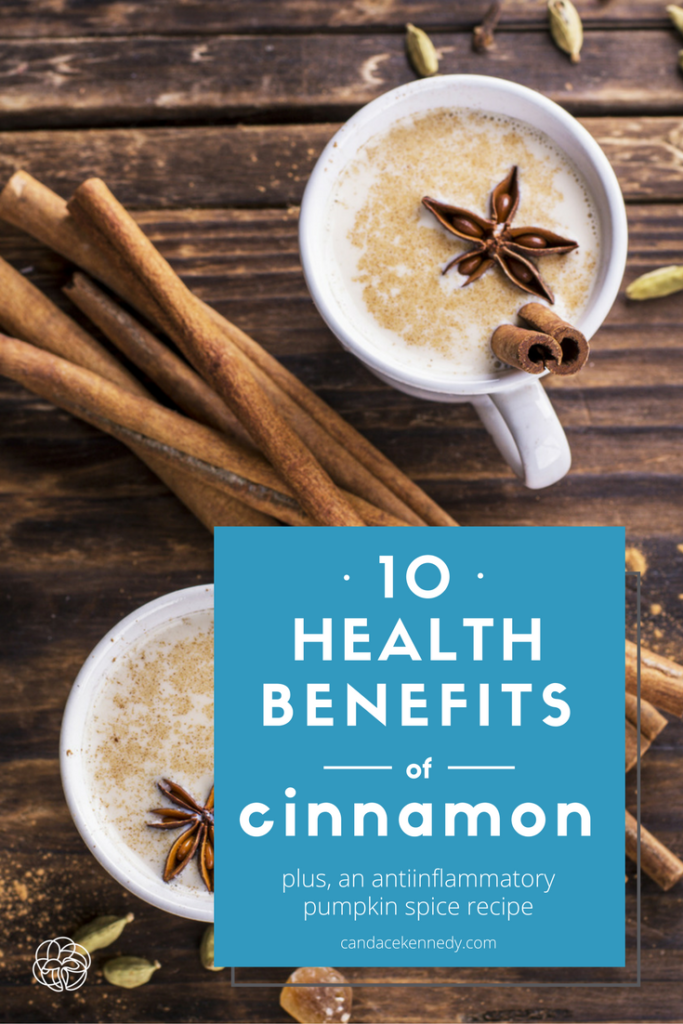Cinnamon is one of the oldest and most commonly used spices in the world. You can find this spice throughout the year, but its sweet and warm taste is perfect for fall and winter recipes. Its sweet flavor can be deceptive, as it also happens to be one of the healthiest spices you can find. Cinnamon is often added to sweet treats and desserts. Good thing because it can actually help counter the adverse effects of consuming those sweets by regulating blood sugar and improving your body’s insulin response.
I use Ceylon cinnamon daily, both therapeutically and to add flavor and sweetness to my recipes. Since I have PCOS, I have to pay close attention to my blood sugar and insulin response, as PCOS can lead to insulin resistance. Of course, having PCOS isn’t the only reason you’d want to keep your blood sugar in check and improve your insulin response. Blood sugar spikes and drops can lead to hypoglycemia and hyperglycemia, in the short-term. Over time, frequent, out-of-control blood sugar can contribute to weight gain and even play a role in developing conditions including metabolic syndrome, insulin resistance, Type II diabetes, and more.
For all of these reasons, I use Ceylon cinnamon in my coffee every morning, take it as a supplement, and add it to dishes whenever possible. No, it’s not a cure-all, but the research is strong demonstrating its positive effects on blood sugar and insulin sensitivity. Plus, it’s just downright delicious and can turn a winter vegetable side dish into something that tastes like pie filling, without all the added sugar.
In this article, you’ll learn about why cinnamon is so good for you, how to choose the right cinnamon, and how to start adding cinnamon into your diet. Plus, a recipe for anti-inflammatory pumpkin spice blend!
10 Health Benefits of Cinnamon
- Cinnamon can reduce your blood glucose levels, especially after a high carbohydrate meal.[1, 2, 3]
- It can improve your insulin sensitivity (most likely by reducing blood glucose levels).[4,5]
- Cinnamon and cinnamon oil can kill bacteria and fungi, including antibiotic-resistant bacteria and Candida.[6]
- It can reduce inflammation by inhibiting the release of arachidonic acid, an inflammatory fatty acid (although, perhaps not quite as effective as capsaicin, from cayenne, and curcumin, from turmeric).[7]
- Consuming cinnamon can increase digestive fluid secretion, helping to relieve gas and bloating.[8]
- The smell of cinnamon can boost brain function and alertness.[9]
- It is a great source of manganese, an important antioxidant mineral that helps maintain healthy skin and regulate blood sugar.
- Cinnamon is full of antioxidants, including powerful polyphenols like quercetin and catechin that help your body fight free radicals.[10]
- Research shows that it can help protect against cancer.[11, 12, 13]
- It may also play a role in the prevention of metabolic syndrome, type 2 diabetes, and insulin resistance.[14]
How to Choose the Right Cinnamon
You may be wondering why I specifically call out Ceylon cinnamon. Isn’t all cinnamon the same? Not really. Often referred to as “true cinnamon,” Ceylon cinnamon is different from the more commonly found Cassia cinnamon. Ceylon and Cassia both possess at least some of the health benefits associated with cinnamon consumption, such as insulin regulation and antimicrobial and anti-fungal properties.[15] The primary factor that sets them apart is a blood-thinning compound called coumarin.
In large amounts, coumarin can be toxic to the liver.[16] Cassia has far more coumarin than Ceylon, with the amounts in Ceylon being negligible. Coumarin also plays a key role in giving cinnamon its taste, which is why Cassia has a stronger flavor than Ceylon. Seeing that I take large amounts of cinnamon every day for its insulin-regulating properties, better to protect my liver and go with the Ceylon.
You can also reduce coumarin levels by making a cinnamon tea. The coumarin is mostly left behind in the sediments, but the tea still has the same benefits.
How to Use Cinnamon
Here are some of my favorite ways to add more of this spice into life:
- Add it to your morning coffee. Lately, I’ve been loving Four Sigmatic Mushroom Coffee with Lion’s Mane, for brain-boosting power. (It tastes nothing like mushrooms, but rather the richest, most delicious coffee I’ve had in a long time!) I like to make it with a few tablespoons of coconut milk, 1/2 scoop of collagen protein powder and 1/2-1 teaspoon of Ceylon cinnamon.
- Add a teaspoon of cinnamon to your smoothie or smoothie bowl.
- Add it to winter vegetable dishes, like this recipe for whipped butternut squash.
- Simmer a cinnamon stick and star anise in 1 cup of coconut milk or almond milk. You can add a small amount of raw honey or grade B maple syrup for a sweet, warming beverage.
- Use it to flavor meat. Yes, meat! Try this spiced ground lamb recipe. You won’t regret it.
- Make cinnamon spiced nuts by roasted pecans or walnuts with maple syrup, cinnamon and nutmeg.
- Use it to add even more flavor and spice to curries.
- In honor of pumpkin spice season, you can also try this recipe for anti-inflammatory pumpkin spice blend:
What is your favorite way to use cinnamon? Share your tips and ideas in the comments below!
Pin and save for later:
Important Notes:
I am not a doctor, and I don’t claim to be one. I can’t prevent, treat, cure or diagnose illness or disease. The information presented on this website is not intended as specific medical advice and is not a substitute for professional medical treatment or diagnosis. I make a small commission from the product links above, although the price of the products stays the same for you, whether or not you purchase through my affiliate links. You can purchase these products directly from the sites if you don’t wish to use my affiliate links.
References:
- http://www.ncbi.nlm.nih.gov/pubmed/19930003
- http://www.ncbi.nlm.nih.gov/pubmed/17381386
- http://www.ncbi.nlm.nih.gov/pubmed/16634838
- http://www.ncbi.nlm.nih.gov/pubmed/18234131,
- http://www.ncbi.nlm.nih.gov/pubmed/20513336)
- http://www.sciencedirect.com/science/article/pii/S1010518209000523
- https://www.ncbi.nlm.nih.gov/pmc/articles/PMC3144156/
- Wood, Rebecca Theurer. The New Whole Foods Encyclopedia: A Comprehensive Resource for Healthy Eating. New York, NY: Penguin, 2010. Print.
- https://www.ncbi.nlm.nih.gov/pmc/articles/PMC3231408/,
- https://www.ncbi.nlm.nih.gov/pmc/articles/PMC4003790/
- https://www.ncbi.nlm.nih.gov/pmc/articles/PMC3105590/
- https://www.ncbi.nlm.nih.gov/pubmed/16253769
- https://www.ncbi.nlm.nih.gov/pubmed/12860272
- http://www.ncbi.nlm.nih.gov/pubmed/20513336
- http://www.ncbi.nlm.nih.gov/pubmed/10725162
- http://www.ncbi.nlm.nih.gov/pubmed/20024932



Trackbacks/Pingbacks